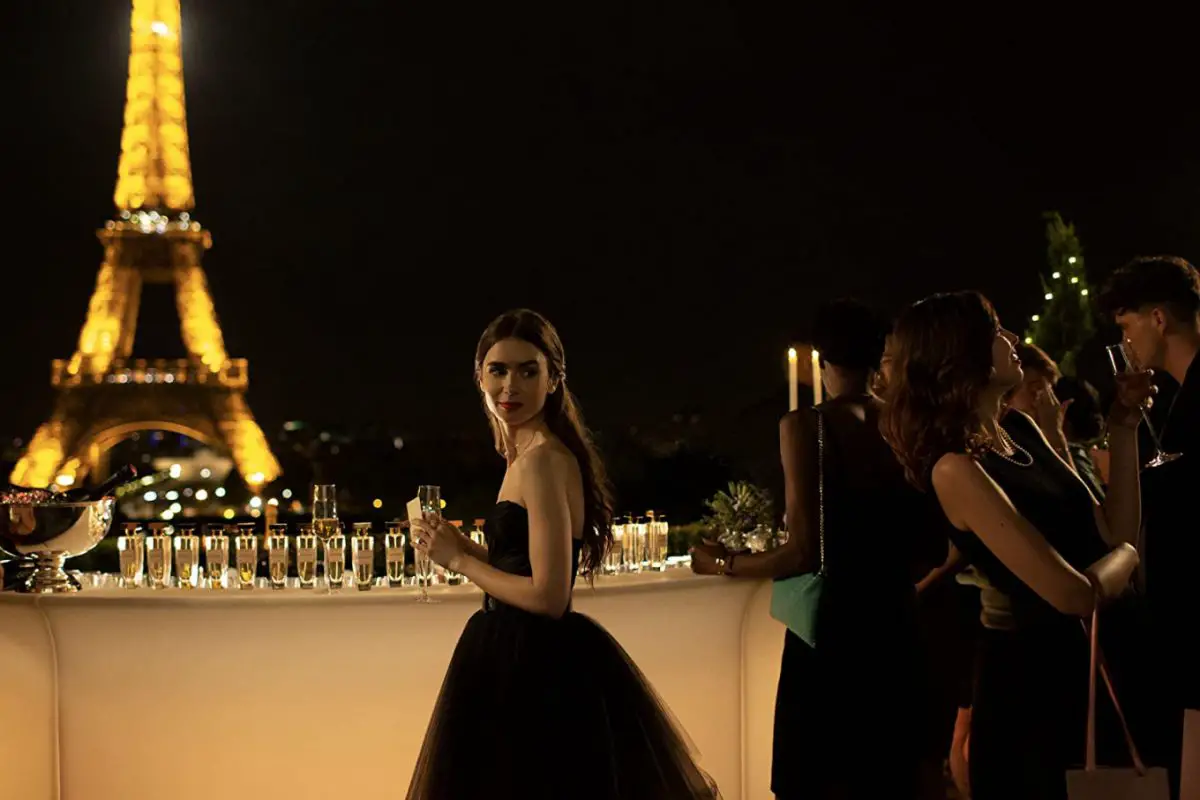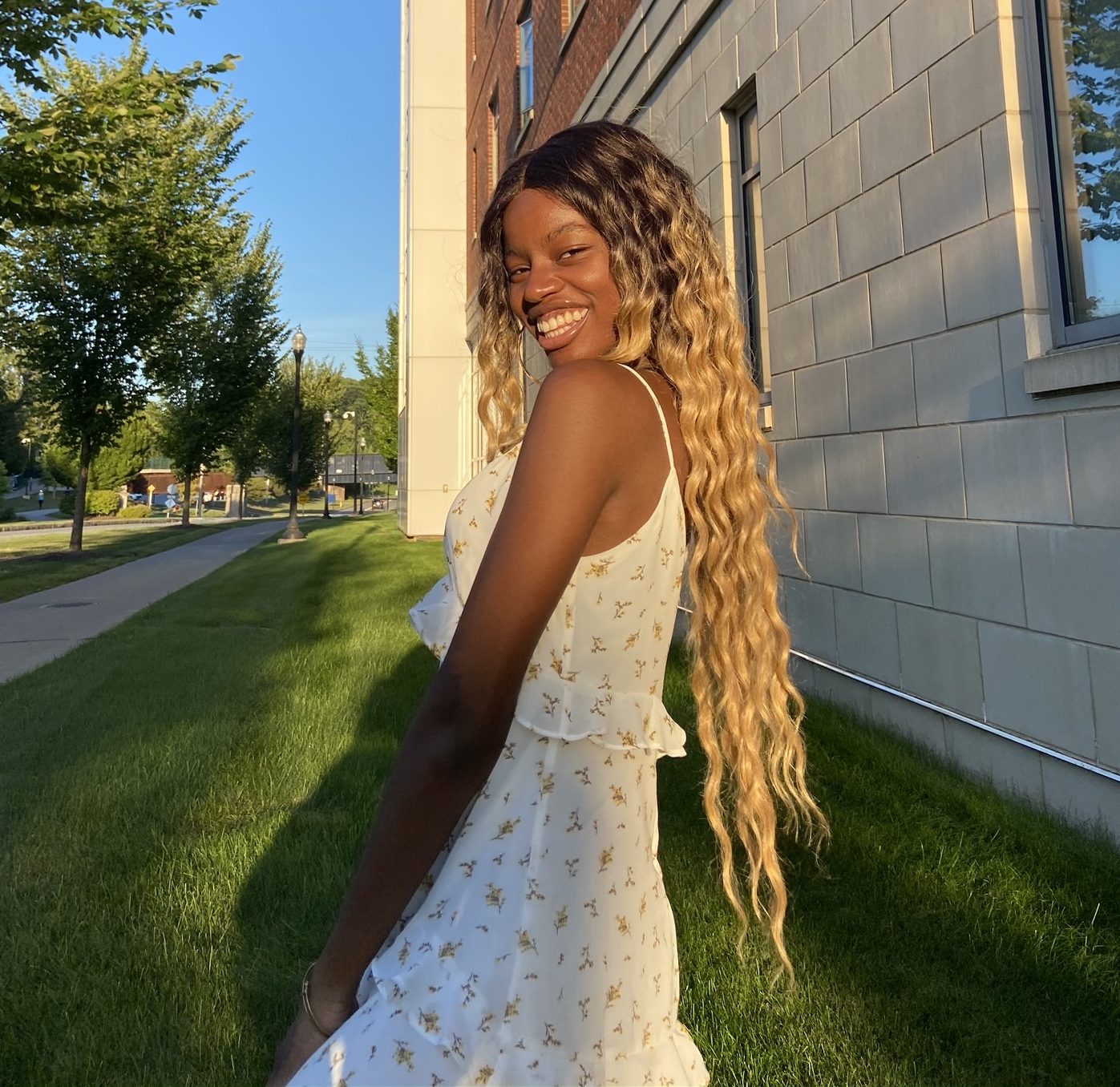It’s October, so fall is in full swing and it’s the perfect time to pull out the fuzzy sweaters and a cat to cuddle with as you snuggle into the couch to watch a new show. The new Netflix show “Emily in Paris” requires just enough brainpower to click “next episode,” but it has faced backlash for painting an airbrushed version of France.
Of course, creator Darren Star’s previous projects, such as “Sex in the City” (1998-2004) and “Younger” (2015- present), are no stranger to controversy. Is “Emily in Paris” insensitive to the times that we’re living in now? Or is it just the right amount of lighthearted fun we need to take our minds off of the world?
Disclaimer: This post contains spoilers.
Who Is Emily?
Emily is a 20-something woman from Chicago who works for a marketing firm and moves to Paris for work after her boss finds out she’s pregnant and decides not to go. Emily’s job is to bring French brands over to an American audience through the French firm. The problem is, she has a hard time connecting with the people there because she doesn’t speak French and she very clearly acts like a tourist in the city. She’s your overly perky, optimistic American girl with supposedly “fashion-forward” outfits who explores the romantic city on a surface level without taking the time to learn French culture. That’s not to say I didn’t like the show, but there are some very distinct issues that should be discussed before going into it.
“Emily in Paris” is supposed to explore a setting different from the fictionalized New York City that Darren Star is typically known for, but as critiqued in Bustle, “at least [in those shows] the characters had challenges that felt like heightened versions of things that human beings might experience on Earth.” Now I won’t go as far as to say that “Emily in Paris” feels like it takes place in a two-dimensional world, but I will admit that it’s giving very 2007, tone-deaf “Gossip Girl” vibes — except in Paris. So let’s discuss some of the issues with the show.
Travel and Privilege
I’ve been to France once and I must say, it truly is beautiful. I’ve never been to Paris (though I hope to one day soon) but Emily gets to live out that dream. Watching the show, I was hoping I’d be able to live vicariously through her, except the show did nothing but highlight the problems of being a tourist in another country. Emily was supposed to learn how to live in Paris, which means learning French culture, the language, the people, the food, etc. And what does she do? She criticizes the language, belittles French workplace etiquette and then is so confused when they don’t like her. To be honest, I’m not even sure if it’s the show that’s the problem or just her.
Being a tourist in a popular city is something many people can relate to but I find that shows like this never seem to emphasize the damage it can do to the communities that already exist there. When you sleep in fancy hotels and eat at fancy restaurants and pay for expensive tours, you completely disregard the way you’re using people’s resources, often raising rent and taxes and then leaving it to others to clean up the homes that you left in a mess. I speak from the experience of living in New York City where gentrification pushes low-income families out of their homes to make space for generating tourism revenue.
Not to say that being a tourist is bad, because as I said, I too, was a tourist visiting France. Still, it’s important to be mindful of the communities while you’re there because those are people’s homes. But it’s even more important to be aware of the spaces you occupy when you intend to live somewhere so you lessen the negative impact you can make as a foreigner on the people around you. And yet, “Emily in Paris” seems to emphasize that it’s okay to do whatever you want, no matter where you are, as long as you’re a white American girl wanting to “take in the scenery.”
Not Learning the Culture
It all feels very Carrie Bradshaw to me, and not in a good way. Not once does she try to befriend her neighbors while she stays there. She never makes an effort to communicate in French so they can understand, but as soon as there is a problem, she bangs down their doors, demanding the problem fixed. How very American of her. Although she claims that she is making efforts to learn French, it is because she wants her coworkers to like her.
You never got the sense that she actually cares to learn the language so she can speak for herself; she just expects everyone to speak English and conveniently for her, they do. So when the show continues to carry on with only two scenes of Emily in a French class, by the end of the season we’re not surprised to find that she’s not one step closer to saying anything more than “tres chic” in a sentence.
Emily and Her Job
Emily is also supposed to be a social media expert, but she shows up in Paris with a mere 48 followers. By the end of “Emily in Paris,” she gains over 20,000 followers just from posting pictures of croissants and pink roses. It takes a lot more than that to blow up over social media and trust me, no one really cares that much about your adventures in Paris (the only follower I gained overseas was my tour guide and I posted almost as frequently as Emily did). Also, how does someone who looks (and honestly acts) like they’re fresh out of college manage to acquire such a high-level position in order to be transferred to Paris?
Lily Collins, the actress who plays Emily in the show, said in Cosmopolitan that “I believe that she’s pretty fresh out of college. Maybe this is her first year after graduation. I want to say she’s like, 22-ish.” Collins goes on to explain her position by saying, “She’s had enough experience at her company in Chicago to have earned the respect of her boss. She’s a smart cookie and really innovative — and this is not her first rodeo doing what she does. She’s gone to school for this, and she’s completed internships.”
I don’t know about you but I definitely don’t know any recent college graduate who’s working at such a top tier position without a few more strings being pulled than internships and “innovation.” Also, it is said that Emily has no fashion or marketing experience. She used to deal with pharmaceuticals. So what is she actually there for? The millennial perspective? Wouldn’t it just be easier to get a millennial who’s actually qualified and has been working there for longer to do the job? A 22-year-old in 2020 is hardly a millennial. I guess it doesn’t really matter when she is the first person standing there when her boss finds out she is pregnant. I just don’t understand why her boss (played by Kate Walsh) doesn’t try to take advantage of French maternity leave benefits. They get 16 weeks paid maternity leave!
Emily also doesn’t seem to come from any money and is working under a small marketing company, so where is she getting all the cash to afford her designer outfits? ModernGurlz on YouTube did a review count of at least 16 outfits ranging from Gucci to Chanel to Prada that she wore in “Emily in Paris.” Not to mention she doesn’t work in the fashion department so when did she become so fashion-forward?
Though, if we really want to talk about it, the outfits aren’t even that great. Sorry to Patricia Fields (who also did the costumes for “Sex and the City” and “The Devil Wears Prada”) but I have to agree with CR Fashion Book: “There isn’t an excuse for Emily to look like she dressed herself in the dark.” Though some could argue that she had been styled this way to purposefully contrast Parisian and American style, I think she’s just one monochrome outfit away from looking tragically chaotic. Like a toddler who just learned how to dress.
Emily the Tourist
Emily is also just straight up rude sometimes. I have to admit, I don’t love all European cuisine. However, I would never demand that the chef take my food back and recook it. In one episode, Emily gets her steak “raw” and instead of switching her plate with her friend Mindy as she could have, she insists that the “Customer is always right” and that “Maybe she can teach the chef a little about customer service.”
Excuse me, but who do you think you are to teach the French anything about their culture? I can understand why the French are so upset over this show. One critique from People magazine even said “It was both entertaining and painful to watch…some clichés are so extreme that I wonder how the French cast rolled with them” and I honestly have to agree. From an American perspective, some scenes are cringey to watch, but imagine being French watching a production about your city from someone who clearly isn’t from there and doesn’t care about it.
The Plot (or Lack Thereof) of “Emily in Paris”
And then there’s the lack of plot. What is the point of Emily being in Paris other than trying to Americanize everything French while taking flashy pictures at popular landmarks? She sleeps with attractive French men (who speak English), makes one friend who’s also from America, gains a higher following on Instagram, has tensions with her boss and attends a tacky fashion show — literally, a client of the firm is a high-end designer and his final fashion show is a complete knockoff of the Victor and Rolfe’s Spring/Summer 2019 couture collection with the words “I am tacky” and “Basic Bitch” printed across the dresses.
The only thing “Emily in Paris” really does try to talk about is sexism in the workplace, seen after a particularly offensive ad of a naked woman walking in front of men as she wears perfume; even then, it is brushed aside and chalked up to a “simplistic view of men and women” in French culture. Another quote in People magazine pointed out that there are no other attempts to show any other issues facing Paris: “You don’t see anything about poverty, social fights, migration.” The show doesn’t make time to go in-depth over any of these issues; Paris is such a diverse city and there could have been such a story to tell other than watching Emily parade around but never truly engaging with it.
“Emily in Paris” and Diversity
Finally, there’s the chronic issue of diversity. Darren Star has been accused time and time again of lacking diversity in his shows, first starting with “Sex and the City,” which featured a “lack of racial diversity, despite being set in New York” and “dated depictions of the queer community.” As stated in IndieWire, it’s a trend that’s “followed Star onto his other projects, including his most recent success ‘Younger,’ which has also been critiqued for lacking characters of color.”
Looking at “Emily in Paris,” he’s made another failed attempt at making a diverse show and it makes me cringe more than anything for its tone-deafness, especially in today’s society. First, there’s Mindy Chen, played by Korean American actress Ashley Park, as a rich Chinese American babysitter slash ex-Chinese pop singer. Even though we get more backstory out of her than any of the other characters, she has no real personality except meeting Emily for lunch and suddenly rediscovering her talent for singing toward the end of the show. I can’t say I really loved or hated her, I just simply didn’t care.
And then there’s the token Black gay guy, Julien, played by Samuel Arnold. His only personality trait is “sassy.” These two characters felt more like they were posing for a brochure to advertise a PWI and it was blatantly obvious. It makes me wonder why shows like these still exist if they’re not here to portray fresh new stories. If they want to continue to follow these tropes of big city adventure and exploring new cultures, why not use a Black lead? Or a Latinx or an Asian person (including Southeast Asians) as main characters? We’re so past being the “token” minorities in these stories and there are so many actors that you can have play in these narratives, you just choose not to. Being the token this far into the 21st century is worse than not being there at all.
Final Thoughts
The clichè’s are working overtime in this show but I must admit, I’m not opposed to a little cheese. However, if we want to compare “Emily in Paris” to some of the greater, more authentic and hard-hitting moments in Darren Star’s career, then we don’t have to look much further. “Sex and the City” is the OG “Emily in Paris” and “Younger” doesn’t do any better with their diversity in characters.
Darren Star told Forbes, “Each [of his show settings] takes place in a glamorous city with a female lead but the idea of Emily In Paris was very different.” But was it really? Doesn’t seem like it. The only reason I liked it was for the simple reason that it didn’t require much thought. I used it as a show to escape from a long day of classes because I got to watch Emily hop from guy to guy, wearing her weird outfits and I perked up every time Julien hit the screen but that was pretty much it. If the point of the show was to be mindless, maybe Star did something right. We’re not able to travel right now so maybe imagining yourself someplace like Paris is good enough — or maybe you just like watching bad rom-coms. But even though I feel this way about the show now, I’m hoping Season 2 can fix the aforementioned problems, and “Emily in Paris” can become much better. Or at least as they say in the show, less “ringard” (that’s French for “basic”).

















